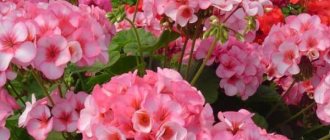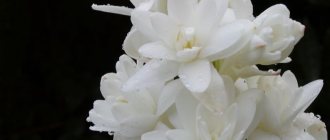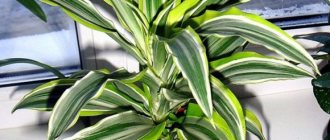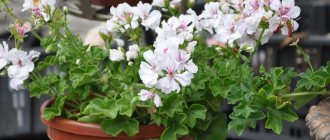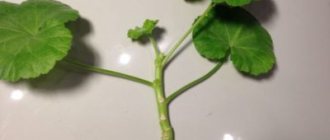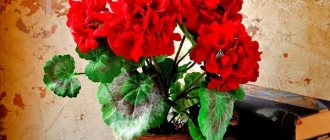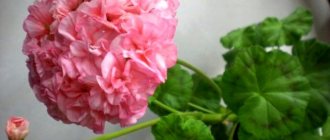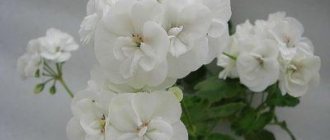We know geranium as an unpretentious indoor plant that delights with bright, numerous flowers from spring until winter. However, not everyone knows that there is another type of this flower that grows quietly in open ground. The hardy “sister” can be found in the garden, forest or marshy area. Botanists have divided them into two varieties, one of which is called “geranium” and the other “pelargonium”. It was the second that became the favorite of almost all gardeners. Both genera belong to the same Geranium family and have the same origin.
Features of winter and summer care for home geraniums
Geranium looks different in winter and summer. This is due to the length of the day and the need to give the plant a rest before the next flowering period.
In summer, protect pelargoniums from direct sunlight. In winter, choose the most illuminated window sill. If the apartment does not have south windows, use a phytolamp, extending the daylight hours to 12-14 hours. This way, the bush will retain its shape, the shoots will not lengthen, and the leaves will not fade.
The room temperature should be at least 22 degrees in summer and no more than 16 degrees in winter. Warmth will help pelargonium bloom magnificently in summer, and coolness in winter will allow you to get the necessary rest and gain strength.
By the way, pelargoniums tolerate ventilation well (not to be confused with drafts!), but not the dry heat of radiators.
In summer, during the flowering period, the plant should be watered more abundantly. In winter, when the geranium is dormant, watering should be moderate. This will prevent excessive soil moisture, which can cause root rot.
What to do with geraniums grown outside in autumn and winter?
Autumn can be very cold, especially in the pre-winter months, so don't risk leaving your geraniums outside. Plants can tolerate cold weather, but only to a certain extent. It is dangerous to expose pelargonium to night frosts and negative temperatures. It may freeze, which will lead to irreversible consequences.
In order to preserve the plants in time and lay the foundation for future flowering, they must be sent for the winter. To do this, you need to put the pelargonium on the balcony, porch, cellar, warm garage or basement. If it grows in a pot, there will be no problems with carrying it. And when grown in open ground, geranium must be carefully transplanted into a pot with a root ball and left for the winter in an unheated room.
Wintering geraniums
Geranium pruning
This procedure can be carried out in autumn or spring, depending on the variety of pelargonium. Zonal pelargoniums, for example, can grow greatly, and if this does not bother you in any way, they do not need to be pruned. In this case, small plants should be left without pruning until spring. For variegated varieties, pruning is very stressful, so it is recommended to do it in the spring. Ampelous pelargoniums need to be pruned only if they grow excessively.
Important: Always remove faded inflorescences and yellowed leaves, regardless of the type of geranium, and pruning is an individual procedure for almost each variety. For small pelargoniums, pruning will not matter much, but for large plants it is very important.
Procedure for pruning pelargoniums in autumn
At the end of September, cut off absolutely all flowering shoots, regardless of whether they have bloomed or are still active. This will help the geranium preserve its resources for the winter.
Leaves that have already turned yellow and wilted or are just beginning to turn yellow are removed. Experienced gardeners recommend pinching them off rather than cutting them with scissors. In the latter case, only a few protruding roots remain.
For denser flowering in September, pelargonium should be pruned before the branches begin or just above the node (from 3 to 5 cm). Then the top cut shoots can be rooted as cuttings. You need to continue pruning the plant until it loses its beautiful, lush appearance.
If the plant is young, it should only be pinched, and this must be done in accordance with the following rules :
- Start pinching young plants after they reach a height of 5-6 cm.
- When the geranium grows another 5 cm, it should be pinched again.
- To get a spherical bush, you can trim it three times in the same way.
How to properly care?
Carefully monitor the temperature, and do not forget to water the geranium regularly. Recommended temperature for growth: from 10 to 15 degrees during the day and at least 5 degrees at night if winter sowing was done, 20 degrees during the day and 16 degrees at night if planted in spring.
Common diseases and pests
Pests that can damage the plant:
- Nematodes. The most dangerous parasites for which there is no treatment. If they hit the Black Velvet, then all that remains is to dig it up and destroy it, just like the earth.
- Spider mite.
- Aphid.
- Whitefly.
The last three species are destroyed by washing the flower and treating with insecticides.
Types of diseases that can harm geraniums:
- Leaf rust due to fungal infection. Appears as rusty-yellow spots.
Botrytis mushroom. Because of it, dead zones in the form of concentric circles may appear on the sheet. If the plant is not treated, the leaves may begin to fall, followed by rotting.- Viral infections. Symptoms can be very different: from purple indentations on the stem to stunted growth.
- Edema. Because of it, chlorotic areas appear. As a result, the foliage turns yellow and falls off.
In fact, all diseases can be prevented by good prevention, i.e. avoid excessive soil moisture, water on time, monitor the temperature and periodically inspect the plants for stains.
Let's summarize - the most important thing in caring for geraniums
Proper care is the key to growth and lush flowering. “Green friends” tolerate ventilation well, but cold drafts are dangerous for them. It is important to follow all recommendations during the first time after planting.
- The soil. To plant cuttings, use a mixture of sand and universal soil in a ratio of 1 to 2.
- A weak solution of potassium permanganate will disinfect the prepared soil from harmful microorganisms, parasites, and pests. Potassium permanganate solution can be replaced with boiling water. In this case, you must wait until the substrate cools down.
- If cuttings take root in water, you can add activated carbon to the water. This will reduce the chance of rotting.
- Lush bushes can be obtained by timely pruning. You can do this any time of the year.
- For the normal development of pelargonium in the room, it is necessary to maintain the temperature at +20 degrees Celsius.
- If the leaves begin to dry out during rooting, cover the container with the cuttings with polyethylene, film or a lid.
- It is more convenient to plant seedlings using plastic cups. A drainage layer must be laid at the bottom. In addition, drainage holes must be made.
- A lack of light will quickly lead to a loss of lushness, and the bushes will become stunted. The location of pelargonium should be reconsidered. In summer, pots or flowerpots should be placed on the balcony. Bright light gives the leaves a reddish tint, which is not a sign of disease, it's just a "tan."
- Watering should be moderate and systematic. Spraying is not necessary. The main rule is to not allow the soil to dry out. Signs of this are yellowing of the leaves and their falling off. Avoid stagnation of water (do not allow the root system and neck to rot). Good drainage can help with this. In winter, watering is carried out less frequently. It is enough to water pelargonium 2-3 times every 4 weeks.
- The following fertilizers are suitable for geranium: phosphorus, nitrogen, potassium. With the right ratio of elements, your green pet will bloom profusely. You can use special fertilizers and complexes for this type of flowering plants.
- Pruning is a prerequisite for the proper development of pelargonium. The best time for this procedure is autumn. It promotes the formation of an elegant crown and greater tillering.
Description of appearance and photo
Black geranium is the only one of all varieties that is distinguished by its dark chocolate leaves. Plant height is 25-30 cm. The leaves are dark brown in the center, green at the edges, with a slight wave . Moreover, the leaves of black geranium in the first year of life have a bronze tint, and only as they grow they become chocolate. The inflorescences of this geranium are small and can be pink, light pink, and sometimes bright red.
This variety is a multifloral, i.e. it is quite compact, low, and has abundant flowering. At the beginning of the 20th century, geranium was popularly called the “poor man's rose.”
See photos of this unusual and beautiful plant:
Scented-leaved Pelargonium
It was the smell of crushed geranium leaves that attracted people’s attention to this plant. Until the century before last, the main attention when selecting indoor geraniums was paid not to the beauty of the flowers, but to the aroma, because the plants served as “living deodorants.”
Similar varieties and hybrids of fragrant geranium are still popular today. They will not amaze with their bright flowering or the shape of the inflorescences, but they are used for flavoring culinary dishes and for household fragrance when storing bed linen or outerwear.
Depending on the type and variety, as in the photo, indoor geranium, its leaves can smell like all kinds of fruits, mint and roses, nutmeg, carrots or pine needles.
Video about the features of fragrant geranium
There are several hundred types of geranium. This flower amazes with its variety of color shades and leaf shapes. In addition, there are both tall (more than 50 cm) and low-growing bushes.
In this article we will talk about the special variety series F1 - “Black Velvet”, which, as the name suggests, is distinguished by a special leaf color.
How to grow this hybrid, what are its features? You will learn about all this in detail in our article. Also watch this helpful video.
Pelargonium zonal or bordered (Pelargonium zonale)
All kinds of hybrids and varieties of this type of indoor geranium, as in the photo, grow well in the house, on balconies and even in city flower beds. This is the undoubted leader in popularity and number of cultivated varieties, of which there are about 75 thousand today.
Among other domestic perennial geraniums, zonal plants are easily recognized by the characteristic color of their foliage. Against a bright green background, darker areas are clearly visible, which give the name to the whole type of indoor geraniums, as in the photo. Zonal pelargonium flowers can be either simple or double.
When describing geranium varieties, in the photo, and in the names of plants, the following gradation is used according to the number of petals in the corolla:
- non-double flowers consist of five petals - Single;
- semi-double flowers have from 6 to 9 petals and are designated Semi-Double;
- double geranium flowers consist of 8 or more petals - Double.
Terry varieties are sometimes called peony geraniums, which is somewhat incorrect. There is no such group of plants in the internationally recognized classification.
Zonal geranium flowers differ not only in splendor and size. Long gone are the days when only red geraniums were displayed on the windows.
Depending on the variety and variety, pelargonium pleases the eye with umbrella-shaped inflorescences of all shades of pink, cream, burgundy or crimson. It is not uncommon to have plants with white, multi-colored and even yellow corollas, as in the photo of a geranium variety called First Yellow Improved.
But these are not all the strengths of indoor geranium. Flower growers pay special attention to varieties with a flower shape that is uncharacteristic for the species.
Rosaceae (Rose-bud Zonal pelargoniums)
An example is a pink-shaped geranium, as in the photo, with double, showy flowers, reminiscent in structure and appearance of miniature English roses.
This variety of indoor geranium, its name and photo of flowers have been known in the world since the century before last. The first information about plants was published in the Bulletin of the Royal Horticultural Society of Britain in 1876. But in our country, rosaceous varieties have not yet become widespread and are found only in the collections of the most enthusiastic flower growers.
Tulip-shaped indoor geraniums (Tulipe-bud pelargonium)
A century later, flower growers received domestic geranium plants with flowers that, even in full bloom, do not open, remaining in the bud stage.
As a result, this indoor geranium shown in the photo was called tulip-shaped. The variety began with a spontaneous mutation, and the few varieties and hybrids of tulip-shaped geranium that exist today sometimes try to return to their natural form when grown or propagated.
Star indoor geraniums (Stellar Zonal Pelargonium)
In the middle of the last century, Australian flower growers managed to obtain indoor geraniums with an original corolla shape, unlike the varieties that existed before.
Because of the sharp-angled, narrowed petals, the indoor geranium, in the photo, is called star-shaped.
Currently, flower growers have at their disposal varieties and hybrids not only with simple and double flowers of all shades, but also star-shaped pelargoniums with bright multi-colored foliage.
Cactus-shaped house geraniums (Cactus Pelargonium)
Cactus-shaped geraniums obtained at the turn of the 20th century are extremely rare today. A characteristic feature of these plants is large flowers with narrowed, sometimes needle-like petals, giving the corolla a sloppy, disheveled appearance.
Carnation Pelargonium
Indoor geraniums, in the photo, amaze with the variety of flowers, colors and types. One of the most unusual is the carnation variety of zonal pelargonium with serrated petals, giving a resemblance to carnation flowers.
Pelargonium Unicums (Unique Pelargonium)
Hybrid plants obtained from royal and brilliant pelargonium began to be called unique. This group belongs to the oldest varieties, although it is not so easy to find plants in gardeners’ collections.
Although the flowers of this variety, as in the photo of indoor geranium, are similar to the flowers of royal plants, they are much smaller. But the foliage is often dissected, corrugated, and also has a pleasant smell.
For example, the greenery of the geranium variety shown in the photo called Paton's Unique has a sweetish fruity aroma.
Royal pelargoniums (Regal Pelargonium)
Many indoor geraniums were obtained as a result of breeding work and hybridization between species. Thanks to such efforts, royal pelargoniums with flowers up to 7 cm in diameter appeared.
The peculiarity of these varieties and hybrids lies not only in the size of simple and semi-double corollas, but also in their multi-colored color. The petals must have spots, veins or specks of contrasting tones.
Pelargonium Angels (Angel Pelargonium)
Pelargonium Angels in appearance resemble plants of the “royal” variety. But the flowers here are somewhat smaller, and the existing varieties were obtained by crossing curly pelargonium with large-flowered pelargonium.
Angels are basically ampelous geraniums, as in the photo, forming a lush crown of shoots with medium-sized, monochromatic foliage.
Ivy-leaved Pelargonium
Most ampel varieties of indoor geraniums, as in the photo, belong to the large group of pelargoniums and have leaves reminiscent of the dense green foliage of ivy. Because of this similarity, numerous varieties with simple and large double flowers are called ivy-leaved.
Ampelous geranium, as in the photo, is a plant with creeping or cascading stems reaching a meter in length. In cultivation, such varieties are indispensable both for vertical gardening and for decorating hanging baskets. Indoor pelargoniums are also used as ground cover plants.
The leaves of ampelous geranium are dense, leathery, unlike the zonal variety, completely smooth.
The variegated forms of ivy-leaved geranium, as in the photo, are very interesting.
Reproduction
Many owners of pelargoniums want to get new specimens for their collection. The plant is propagated in two ways - cuttings or seeds. Each has its pros and cons.
Cuttings
The simplest option is that after pruning, the branches are cleared of the lower leaves and placed in water. After this, you just have to wait for the roots to appear.
Some gardeners recommend planting cuttings directly into the ground.
They are buried to a depth of 2-3 cm, after which they are carefully watered. Germination may take several weeks.
Seeds
This method allows you to obtain rare varieties, but it requires a lot of time and special growing skills. Collecting the seeds is simple - you need to wait until dry boxes form in place of the flower stalks. They will contain seeds.
It is better to grow them in spring. To do this, place one seed at a time in small pots and sprinkle with soil. They are covered with a bag or glass on top, which creates a greenhouse effect.
For reference! The first shoots appear in 3-4 weeks. After this, you need to wait for the sprouts to get stronger and transplant them into new pots.


